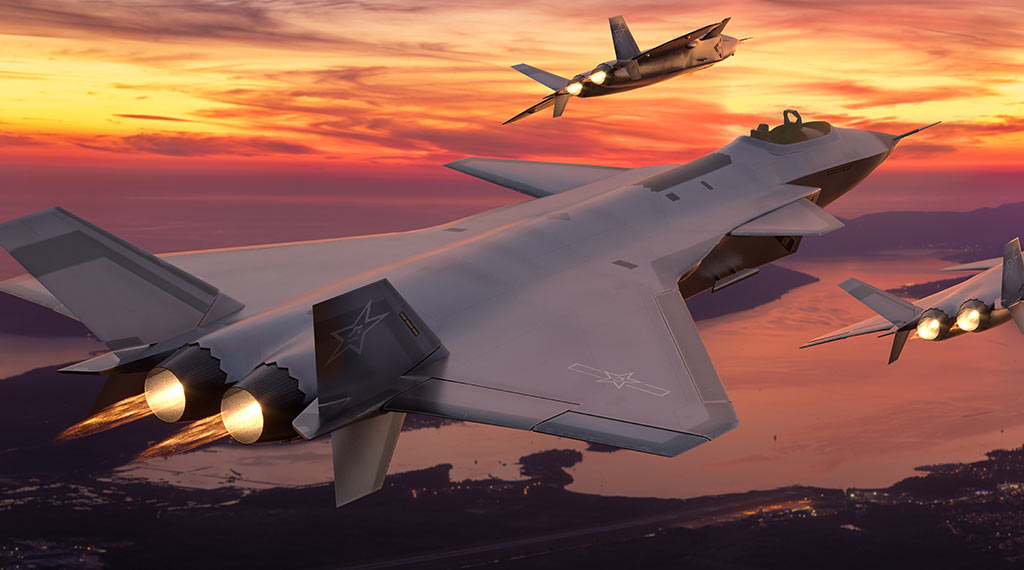
Industry analysts and military experts have long debated the true threat Beijing’s premiere J-20 stealth jet actually poses to existing fifth-generation fighters. Last week, the head of the U.S. Air Forces in the Pacific (PACAF) told reporters that the J-20 is not “anything to lose a lot of sleep over,” indicating his assessment that China’s “Mighty Dragon” is not as formidable as Beijing would like to portray. However, while some aspects of the J-20 have been made public, a lot remains unknown regarding the fighter’s makeup and potential capabilities. Perhaps the mystery surrounding China’s fifth-generation fighter is the Mighty Dragon’s most concerning attribute.
What is the J-20?
Since the early 1980s, the U.S. has retained its status of having the most superior fleet of airframes in the skies. As the only country equipped with fifth-generation stealth fighters, no other air force could compete. The introduction of the Chengdu J-20 fighter – which some consider the globe’s first non-American stealth platform to enter service (some say Russia’s Su-57 is not truly stealth) – altered this reputation. The platform emerged from Beijing’s J-XX program in the 1990s and was officially endorsed by the People’s Liberation Army’s Air Force a decade later. Although the Mighty Dragon officially entered service with the PLAAF in 2017, the airframe only began to serve in considerable numbers by 2018. This year, Beijing has deployed the J-20 throughout the South and East China Seas, suggesting its confidence in the Mighty Dragon’s capabilities.
In August, U.S. House Speaker Nancy Pelosi visited the self-governing island of Taiwan. China responded by launching military drills, showcasing its J-20 fighter among other airframes in a not-so-subtle attempt to intimidate the U.S. from advocating for Taiwan. While some of the fighter’s apparent characteristics should be cause for concern, much information regarding the jet’s full power is murky at best.
Stolen technology?
The pace at which Beijing was able to produce an operational stealth fifth-generation fighter would be impressive if China’s modus operandi in the defense realm were not centered on espionage and theft. In fact, the Chengdu J-10 airframe is directly based on intelligence blueprints procured by China from Israel in the 1980s for its own fighter, which was based on the U.S. F-16 fighter.
Beijing’s other fighters are also essentially replicas of Russian airframes. The Shenyang J-11 and J-16 are largely based on the Soviet-era Su-27 fighter, which China purchased from Russia in the late 1980s. According to Sandboxx News, China’s primary carrier-based jet, the Shenyang J-15, is also based on the Russian Su-33, which Beijing reverse-engineered.
Featuring striking similarities to the F-22 and F-35 fighters, the J-20 appears to rival the technology of its American near-peer airframes. The J-20’s fuselage shape, exhaust nozzle shape, engine intake shape, and paint design mirror the U.S. fighters in every way.
Originally, the J-20 was powered by a Russian-made engine. Beijing eventually developed its own WS-15 engine to power the fighter. As previously reported,an analyst from the Beijing Yuan Wang military think tank said that the American XA100 engine that powers the F-35 remains at least ten years ahead of the WS-15. The analyst elaborated that “China has so far just matched the American engines in some areas, but not in overall performance. It’s also not meant to emphasize one area because military confrontation is about a competition of systems and a contest of joint operational capabilities.”
The J-20 is believed to be capable of reaching a maximum speed close to Mach-2 with a ceiling of approximately 60,000 feet and a range of 700 miles. However, these numbers should be exaggerated since the fighter’s true capabilities remain a mystery. U.S. military officials are confident that the Mighty Dragon is capable of beyond visual range engagements (BVR), which allow the jet to lock on and fire a missile toward an enemy airframe without the need to dogfight.
Despite the controversy surrounding the J-20, Beijing’s introduction of the world’s first (although some would dispute the claim) non-U.S. stealth platform is a feat. If the PRC does move forward with an invasion of Taiwan, the Mighty Dragon will represent the most significant obstacle for defensive forces to overcome in the skies.
- US Stands Up New Drone Strike Force in the Middle East - December 9, 2025
- Has Russia Finally Sold its Su-35s to Iran? - December 2, 2025
- Iran’s Growing Missile Arsenal Is a Challenge for Israel - November 18, 2025
